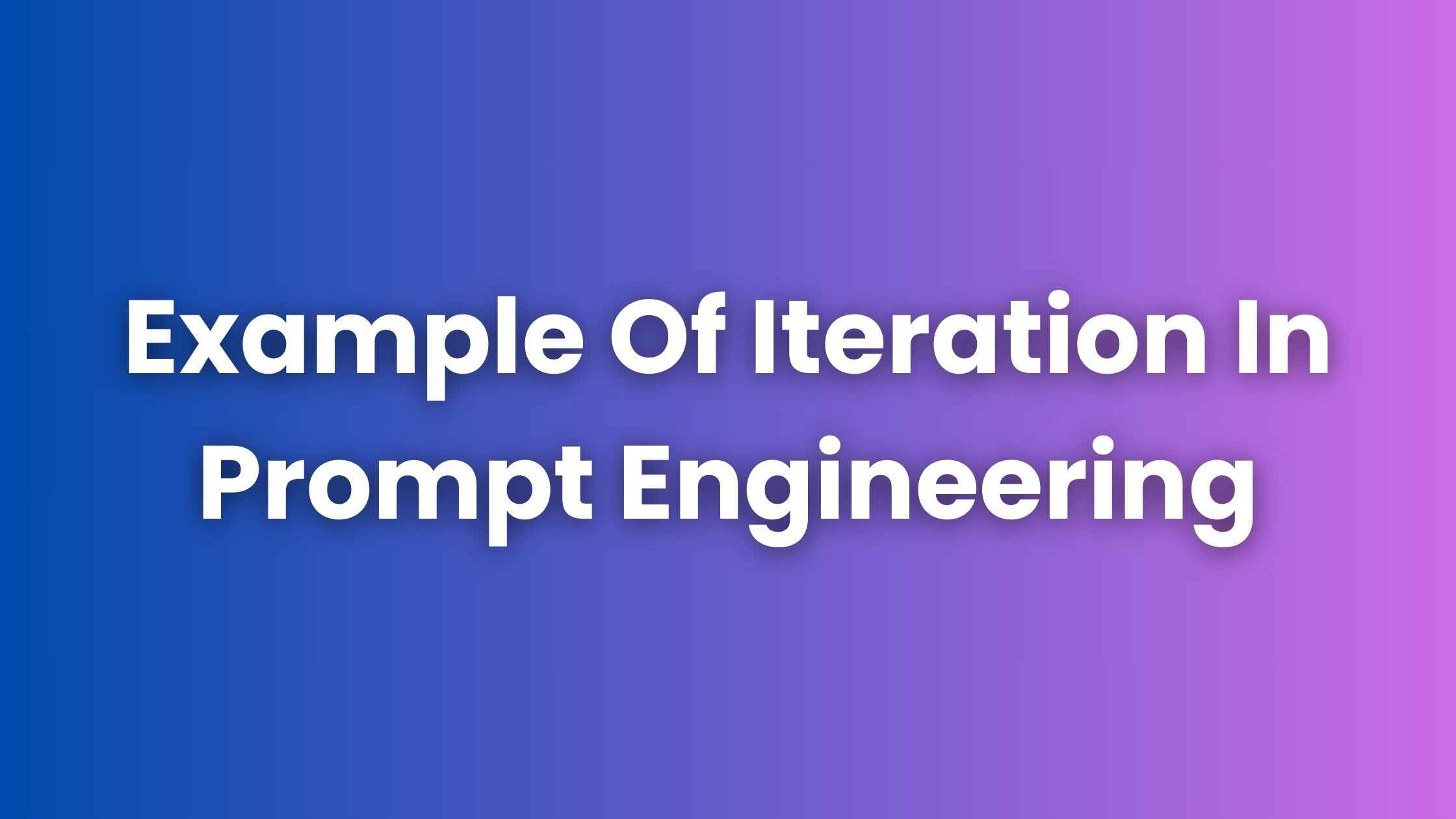Have you ever wondered how to get better results when talking to AI? Let’s explore a cool trick called iteration in prompt engineering. It’s easier than it sounds!
An example of iteration in prompt engineering is when you try different ways to ask an AI for something. You keep changing your question bit by bit until you get the answer you want.
In this blog, we’ll look at how iteration works with a real example. You’ll see how small changes can make a big difference in what the AI gives you. Let’s dive in!
Table of Contents
- Understanding Iteration in Prompt Engineering
- A Simple Example of Iteration in Prompt Engineering
- Step By Step Iteration Process
- Real-World Example
- Conclusion
Understanding Iteration in Prompt Engineering
Iteration in prompt engineering is like playing a game of “guess and improve.” It’s a way to make your questions to AI better, step by step.
When you iterate, you start with a basic question. Then, you look at the answer you get. If it’s not quite what you wanted, you change your question a little bit.
You keep doing this over and over. Each time, you make small tweaks to your question. The goal is to get closer to the perfect answer you’re looking for.
It’s like adjusting the dials on a radio until you hear the music clearly. You’re fine-tuning your prompts to get the best results from AI.
A Simple Example of Iteration in Prompt Engineering
Let’s say you want to ask an AI to write a short story about a dog. Your first try might be: “Write a story about a dog.”
The AI gives you a story, but it’s too general. So, you try again: “Write a story about a playful golden retriever puppy.”
This time, the story is better, but it’s too long. You adjust again: “Write a 100-word story about a playful golden retriever puppy’s first day at the park.”
Now you’re getting closer! But maybe you want it to be funny. So your next try is: “Write a funny 100-word story about a clumsy golden retriever puppy’s first day at the park.”
See how each time, we made small changes? That’s iteration!
Step By Step Iteration Process
Here is the step-by-step iteration process:
Starting Point
Begin with your first prompt. It doesn’t have to be perfect. Just write down what you want to know or do.
Analyze the Result
Look at what the AI gives you. Is it close to what you wanted? What’s missing? What could be better?
Make Small Changes
Based on what you found, tweak your prompt a little. Maybe add more details or change a word or two.
Try Again
Use your new prompt and see what happens. Did it get better? Worse? The same?
Keep Going
If it’s not quite right, go back to step 2. Keep making small changes and trying again.
Know When to Stop
When you get a result you’re happy with, you can stop. You’ve successfully iterated!
Real-World Example
Let’s say you want to write a product description for a new coffee mug. Here’s how you might use iteration:
First Try
Prompt: “Write a product description for a coffee mug.” Result: Too general, doesn’t stand out.
Second Try
Prompt: “Write a product description for a large, ceramic coffee mug with a funny quote.” Result: Better, but still not quite right.
Third Try
Prompt: “Write a 50-word product description for a large, blue ceramic coffee mug with the funny quote ‘I like my coffee how I like my magic: Black’. Include its size and that it’s dishwasher safe.” Result: Much better! Now we have a specific, engaging description.
Final Touches
You might make one more tweak to add a call to action: Prompt: “Write a 60-word product description for a large, blue ceramic coffee mug with the funny quote ‘I like my coffee how I like my magic: Black’. Include its size and that it’s dishwasher safe. End with a call to action to buy now.”
This process shows how each iteration gets you closer to the perfect product description. It’s all about small, steady improvements!
Conclusion
In conclusion, examples of iteration in prompt engineering show us how to get better results from AI. By making small changes to our questions, we can get closer to the answers we want. Remember, it’s okay to start simple and improve step by step. Don’t be afraid to try different ways of asking. With practice, you’ll get better at crafting the perfect prompts. So, next time you’re talking to AI, give iteration a try. You might be surprised at how much it helps!

